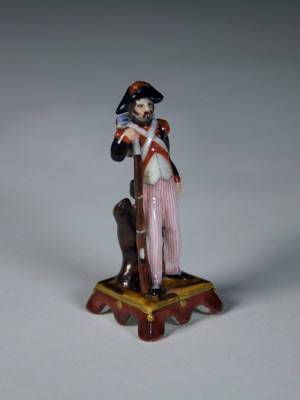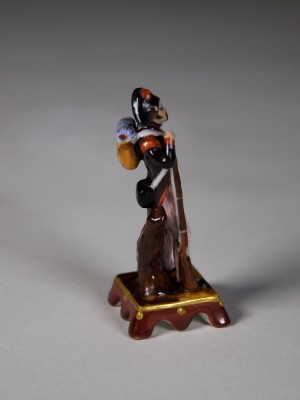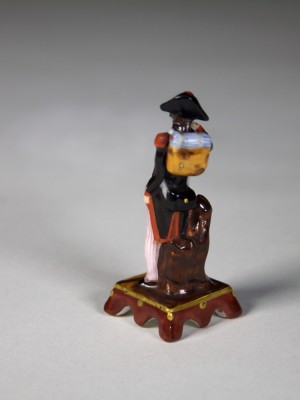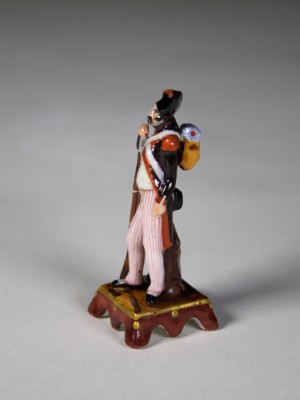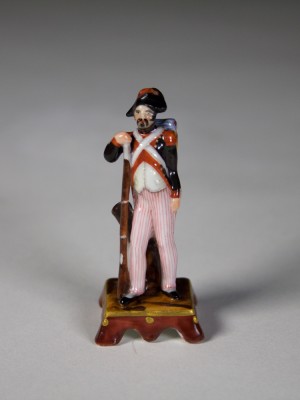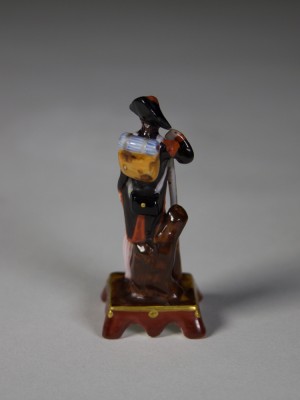This deluxe toy soldier came in the same lot as the Porthos in last week’s post. Another revelation hidden under layers of soot and grease.
While I might have thought this could be a Russian soldier a week ago, research this week said otherwise. It represents a Napoleonic Infantryman from the period 1800 to 1807.
The uniform looks to be a mix of two distinct infantry types. It is possible there were variations of the uniforms that are not seen online. According to online sources, the red epaulets and plume signify a Grenadier while the bicorne and pinstriped trousers signify a Voltigeur. Not sure of the differences but these were two distinct infantry units.
The detailing and finish of this figure is equal in standard to the miniature Porthos. The enamels and gilding are every bit as fine. Still, I am reluctant to ascribe it to the IPF without more information. It might well be French.
According to WIKI, toy soldiers were used from the 17th to the 19th century by battlefield strategists. They represented troop deployments in models used for the development of battle strategies. My hypothesis is this Grenadier/ Voltigeur could be a mock battlefield miniature once used in battle planning. Further, the mixed signifiers of the two distinct infantry units might be deliberate in order to represent multiple infantry units used together. The fun for me is looking for information to substantiate or disprove these claims. It really is the journey as so many say.
If this soldier were in the uniform of 1812, the time of Napoleon’s Russian Campaign, I would feel more confident calling it IPF. It shares a lot of characteristics with the Porthos. I do not rule out the possibility altogether. The artists at the IPF in 1812 may have had to work from five year old images to depict the French soldiers. Surely battlefield planners on both sides would have representations of each other’s soldiers to use in the mock up.
Now a new world of military collectibles to explore in search of the truth.
6cm in height. Early 19th Century. Unknown factory.
Hoping to update.

